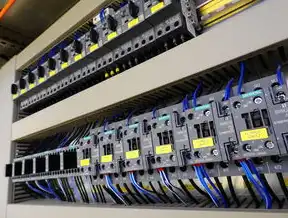Introduction The infamous "500 Internal Server Error" is a universal signal of distress on the web. This error message, displayed in stark white text against a black background, serves as a cryptic warning that something has gone awry within the server's operations. For website owners, developers, and users alike, encountering this error can be both frustrating and bewildering. However, understanding its causes and implementing effective troubleshooting strategies can mitigate such occurrences.

图片来源于网络,如有侵权联系删除
Understanding the 500 Internal Server Error
At its core, the 500 Internal Server Error signifies that an unexpected condition has arisen within the web server during processing of a request. This could stem from various issues ranging from misconfigurations to resource exhaustion or even malicious attacks. The error itself does not pinpoint the exact problem but rather indicates that the server encountered an internal issue preventing it from fulfilling the request successfully.
Common Causes of the 500 Internal Server Error
- Server Misconfiguration: Inadequate settings or incorrect configurations in server software like Apache, Nginx, or IIS can lead to server errors.
- Resource Exhaustion: Overloading the server with too many concurrent requests or running memory-intensive processes can cause the server to crash.
- PHP Errors: In PHP-driven applications, errors within scripts or improper handling of exceptions can trigger a 500 error.
- Database Issues: Problems with database connectivity or queries can also result in a 500 error.
- Code Bugs: Bugs within custom code, whether in backend logic or frontend presentation, might lead to server-side failures.
- File Permissions: Incorrect file permissions on critical system files can disrupt server operations.
- Security Software: Overly aggressive security measures by firewalls or antivirus software can mistakenly block legitimate traffic.
- Plugin Conflicts: In WordPress sites, conflicts between plugins can sometimes cause server errors.
- Outdated Software: Running outdated versions of server software, operating systems, or frameworks increases vulnerability to errors.
- Hardware Failures: Physical server hardware malfunctions, such as failing hard drives or RAM modules, can lead to server instability.
Diagnosing and Resolving the 500 Internal Server Error

图片来源于网络,如有侵权联系删除
- Check Server Logs: Begin by reviewing the server logs for any detailed error messages. These logs often provide specific information about what went wrong.
- Review Recent Changes: If the error appeared after recent updates or changes, revert those modifications to see if the error persists.
- Test in Safe Mode: For WordPress sites, activate safe mode using the
wp-config.phpfile to isolate plugin-related issues. - Monitor Resource Usage: Utilize tools like New Relic or Datadog to monitor CPU, memory, and disk usage to identify potential resource bottlenecks.
- Clear Browser Cache: Sometimes, cached data can interfere with page rendering; clearing browser cache may resolve transient issues.
- Check Database Connectivity: Ensure that your application can connect to the database without errors.
- Inspect Code for Errors: Review your code for syntax errors, unhandled exceptions, and proper exception handling mechanisms.
- Update Software: Keep all server software, including the OS, web server, and database, up-to-date to prevent known vulnerabilities.
- Consult Security Software Settings: Adjust firewall rules or antivirus exclusions to allow necessary traffic while blocking harmful ones.
- Seek Professional Assistance: If the error remains unresolved, consider consulting a professional developer or support team for further assistance.
Preventive Measures Against 500 Internal Server Errors
- Regular Maintenance: Schedule routine maintenance checks to ensure server health and performance optimization.
- Automated Backups: Implement automated backup solutions to safeguard against data loss due to server crashes.
- Load Balancing: Distribute incoming traffic across multiple servers to prevent overloading individual instances.
- Use Content Delivery Networks (CDNs): CDNs can help reduce the load on your primary server by caching content closer to end-users.
- Implement Rate Limiting: Set limits on the number of requests a user can make within a specified timeframe to prevent abuse.
- Optimize Code: Regularly refactor and optimize code to improve efficiency and reduce resource consumption.
- Use Version Control Systems: Employ version control for tracking changes and facilitating rollback when needed.
- Educate Users: Provide clear guidelines and documentation for users to avoid common mistakes that might lead to server errors.
- Monitoring Tools: Utilize monitoring services to keep track of server metrics and receive alerts for anomalies.
- Security Audits: Conduct regular security audits to identify and patch vulnerabilities before they are exploited.
Conclusion
The 500 Internal Server Error, though daunting, is a common challenge faced by web administrators and developers. By understanding its possible causes, employing systematic troubleshooting techniques, and adopting preventive measures, one can significantly minimize the occurrence of these errors. Continuous learning and staying abreast
标签: #500内部服务器错误



评论列表